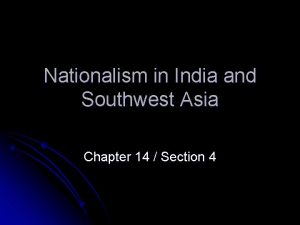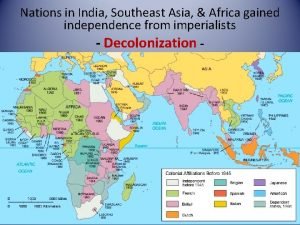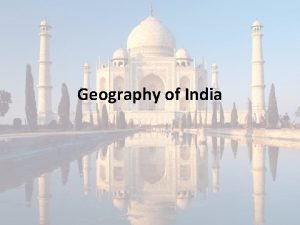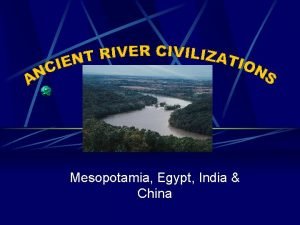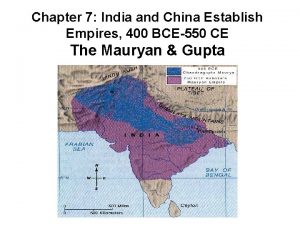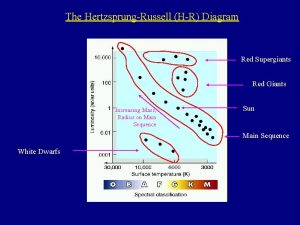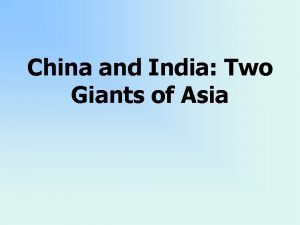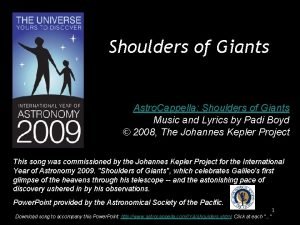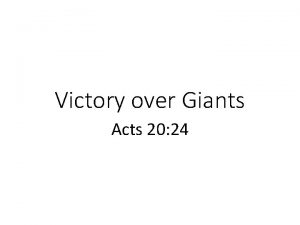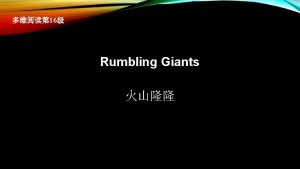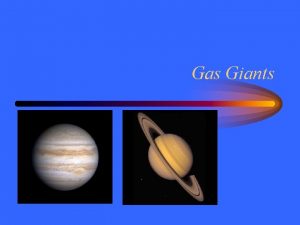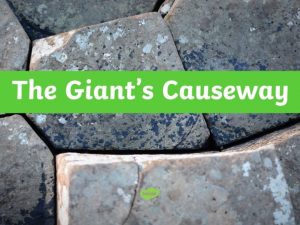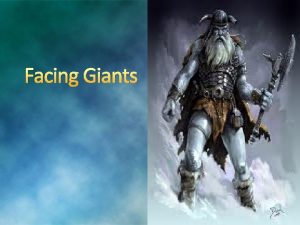CHINA AND INDIA Two Giants of Asia CHINA









- Slides: 9

CHINA AND INDIA: Two Giants of Asia

CHINA REFORMS ITS ECONOMY BUT LIMITS FREEDOM • After Mao’s death, Deng Xiaoping comes to power • Wanted to reform the economy but didn’t care about the people • • Many experienced an increased standard of living but many lived in poverty Tiananmen Square Massacre • • Thousands of demonstrators call for political reform Government calls in the military • • • Thousands killed and wounded Many others arrested and tortured Showed China’s communist leaders would go to any length to preserve order

CHINA FACES CONTINUING CHALLENGES • 1980 s: To limit the population, the government developed the one child policy • Rapid urbanization occurred as many rural workers flocked to the cities • Growing travel and trade helped to spread AIDS across China • Human rights activists condemned the use of prison labor and the lack of free speech

INDIA BUILDS ITS ECONOMY • India used modern technology to expand agriculture and industry • Adopted elements of command economy • Lacked some important natural resources such as oil and natural gas • Green Revolution • New farming techniques • Favored richer farmers • India eventually shifted toward free-market system

INDIA BUILDS ITS ECONOMY • India’s population growth hurts living conditions • More than one third of Indians lived below poverty line • Millions of rural families migrate to cities • Overcrowded cities couldn’t support everyone • Mother Theresa • Founded the Missionaries of Charity in Calcutta • Provided food and medical care to thousands of poor Indians

REFORMING INDIAN SOCIETY • Confronting Caste Discrimination • India’s Constitution ended discrimination against dalits, or the people of the lowest caste • Higher caste Hindus generally receive better schooling and jobs • Sometimes blocked government plans to open more jobs to dalits • Women Make Progress • Under the Constitution, Indian women were granted equal rights • Well to do girls are educated in the cities • Girls from poor families often received little to no education • Women from rural areas are expected to do unpaid work in household industries or farms • Indian women have begun taking political action and setting up self help organizations to improve their lives

TRADITIONAL CASTE SYSTEM IN INDIA • The caste one born into determines his place in society • One is not allowed to change castes • One must marry someone within his or her own cast • There are five castes, or jatis one can be born into • Brahman—Priest • Kshatriya—Ruler, Warrior, Landowner • Vaisya—Merchants • Sudra—Artisans, Agriculturalists • Harijan—Outside the Caste System Source: http: //www. csuchico. edu/~cheinz/syllabi/asst 001/spring 98/i ndia. htm

CURRENT EVENT • Wealth inequalities in China have been one of the most politically sensitive issues in China • Like the US, China’s wealth inequality keeps widening as its economy matures, and wealth accumulates within households overtime • Last year, one of the country’s top institutions, Peking University released the first comprehensive measure of wealth inequality. • This is still a result of Deng Xiaoping’s decision of implementing the Four Modernizations ( Agriculture, industry, science, and defense).

CURRENT EVENT
 Nationalism in india and southwest asia
Nationalism in india and southwest asia Nationalism in india and southwest asia
Nationalism in india and southwest asia Nationalism in india and southwest asia
Nationalism in india and southwest asia Hydrostatic equilibrium
Hydrostatic equilibrium Is india southeast asia
Is india southeast asia What continent is india located on
What continent is india located on Comparative development experiences of india and china
Comparative development experiences of india and china Map of mesopotamia egypt india and china
Map of mesopotamia egypt india and china Chapter 7 india and china establish empires
Chapter 7 india and china establish empires Where are red giants on the hr diagram
Where are red giants on the hr diagram
